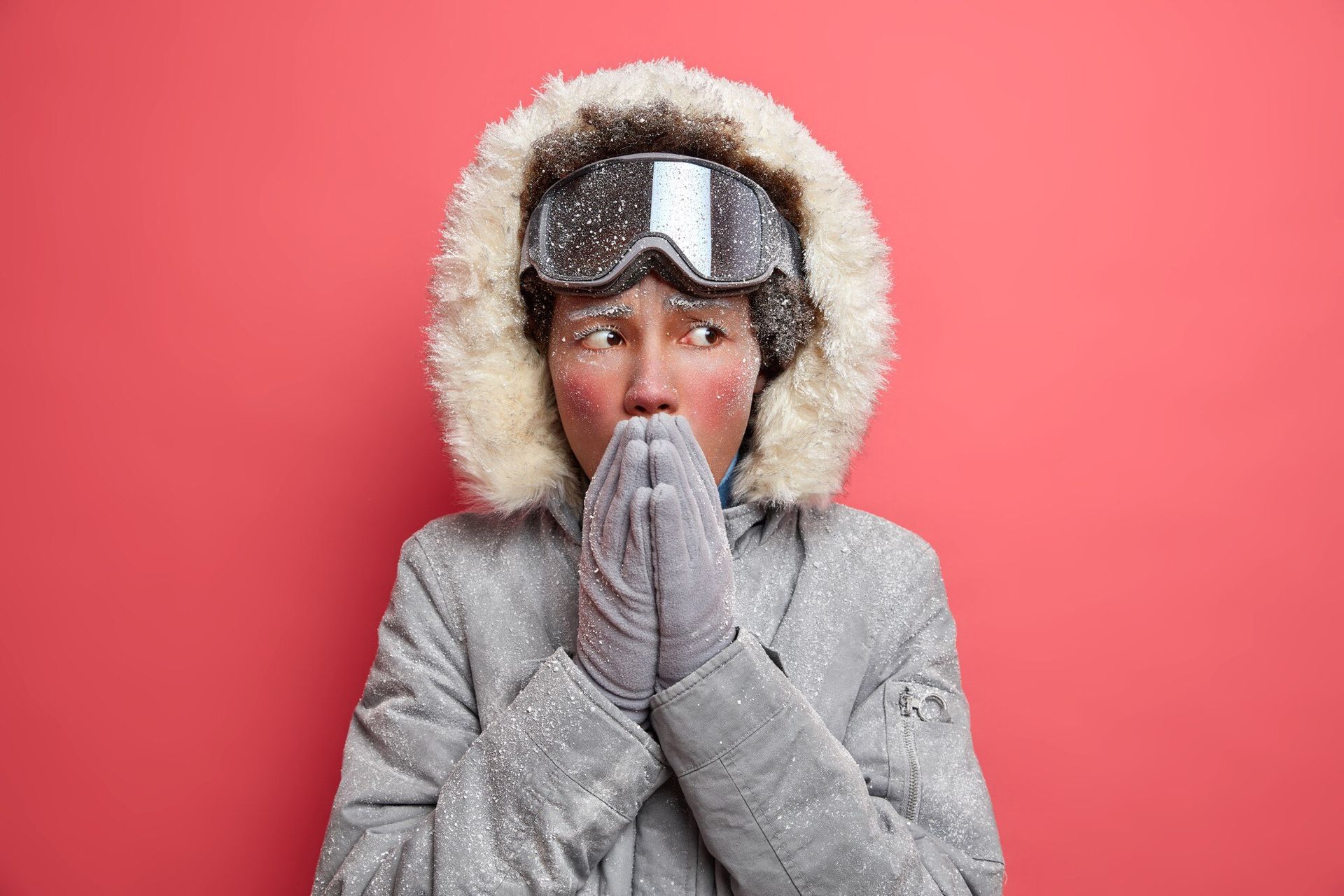Winter Allergies in San Antonio: Common Culprits and How to Find Relief
When you think of allergies, spring blooms or summer grasses usually come to mind, but in San Antonio, winter can bring the same sneezy, itchy problems. The mild, damp climate creates the perfect storm for allergens (like mountain cedar pollen and indoor irritants) that leave many sniffling and scratching in the colder months.
While others cozy up with hot cocoa and blankets, you might find yourself battling seasonal allergy symptoms like congestion, itchy eyes, and fatigue. But it doesn’t have to be that way.
At
Apex Allergy and Asthma, we understand how winter allergies can disrupt your life, and we’re here to help turn your winter woes into wellness. Let’s uncover what’s behind those winter sniffles and explore proven ways to find lasting relief—so you can breathe easy and make the most of the season!
Snuggle Up Without the Sniffles
Why Winter Allergies Are a Problem in San Antonio
Although San Antonio's winter lacks the icy chills of other regions, its mild, damp climate presents allergy sufferers with unique challenges. Unlike in other areas where pollen takes a seasonal hiatus, San Antonio residents deal with ongoing exposure to outdoor and indoor triggers, making winter anything but comfortable for those with allergies.
Here’s why winter allergies are such a challenge in our city:
Outdoor Allergens Stick Around
San Antonio’s mild winters allow allergens like mold spores and cedar pollen to thrive. Mountain cedar is a major offender, releasing pollen in late December and triggering what’s famously known as cedar fever.
Indoor Allergens Take Over
Spending more time indoors increases exposure to dust mites, pet dander, and mold spores. Heating systems can stir up dust and other irritants, making your home less of a refuge during allergy season.
With allergens both inside and out, it’s no wonder winter in San Antonio can feel like an uphill battle for allergy sufferers. But understanding the circumstances is just the start. In the next section, we’ll break down the most common culprits behind winter allergies in San Antonio and how they affect people’s lives.
Common Causes of Winter Allergies in San Antonio
If you’re frequently exposed to both outdoor and indoor triggers, it can be difficult to zero in on the root cause. Knowing what’s causing your symptoms is the first step to taking control of your symptoms and finding relief, so let’s look into the common allergens and see which one is potentially behind your winter woes.
Mountain Cedar (Cedar Fever)
One of the most notorious causes of winter allergies in San Antonio is mountain cedar pollen, produced by the Juniperus ashei tree. Unlike many plants that pollinate in spring, mountain cedar releases its pollen in late December, approaching peak levels in January.
Symptoms of cedar fever include:
- Red, watery, and itchy eyes
- Severe sneezing and nasal congestion
- Fatigue and general malaise similar to cold or flu symptoms
Indoor Allergens
As we spend more time indoors during winter, exposure to indoor allergens increases significantly. Common culprits include:
- Dust Mites: They thrive in warm, humid spaces and often get stirred up by heating systems.
- Pet Dander: This is a common issue in homes with furry friends, especially as they stick on carpets and furniture.
- Mold: Dust-like fungi grow in damp areas like bathrooms and poorly ventilated rooms, worsening during humid winter months.
Outdoor
Mold Spores
The damp and cool conditions in San Antonio provide an ideal environment for mold spores to persist year-round. Piles of fallen leaves and shaded areas are hotspots for molds, which can trigger allergy symptoms when disturbed or airborne.
Air Pollution
San Antonio’s winter weather patterns sometimes trap pollutants close to the ground, a phenomenon known as thermal inversion. This leads to poor air quality, which can irritate the respiratory system and amplify existing allergy symptoms for those sensitive to environmental pollutants.
San Antonio’s winter allergens come from all directions, but understanding these triggers can help you take proactive steps. Next, we’ll share tips and strategies for reducing exposure and finding long-term relief.
How to Identify Winter Allergy Symptoms
Winter allergies can be tricky to identify, often mimicking cold or flu symptoms. Here’s what to watch for and how to tell the difference:
Key Symptoms
- Itchy, watery eyes
- Throat irritation or scratchiness
- Sneezing and nasal congestion
- Clear nasal discharge and lingering fatigue
Unlike a cold or flu,
seasonal allergies don’t usually cause body aches, chills, or a fever. Allergies also tend to last as long as you’re exposed to the allergen, while colds or flu typically resolve within a week or two.
Why Diagnosis Matters
If you’re unsure whether you have common allergies or something else, consult an allergy specialist. At Apex Allergy and Asthma, we use advanced diagnostic tools to identify the exact cause of your symptoms. By pinpointing your triggers, we can create a personalized treatment plan to help you feel your best throughout the winter.
Allergies can feel overwhelming, but with the right diagnosis and care, they don’t have to control your seasons. In the next section, we’ll share tips to manage your symptoms and enjoy a healthier winter season.
Finding Relief from Winter Allergies
Now that you know the culprits behind winter allergies, it’s time to take action. From simple at-home fixes to advanced treatments, there are plenty of ways to manage your symptoms and reclaim your comfort this season.
At-Home Remedies
Small changes in your home can make a big difference in reducing allergen exposure:
- Use HEPA Filters: These filters trap airborne allergens like pet dander and pollen, improving indoor air quality.
- Control Humidity Levels: Keep humidity below 50% to discourage dust mites and mold growth.
- Wash Bedding Regularly: Wash sheets and pillowcases in hot water weekly to eliminate dust mites.
- Clean Regularly: Use a HEPA-filter vacuum and dust surfaces often to reduce allergen buildup.
Lifestyle Adjustments
Adapting your routine can help minimize exposure to common winter allergens:
- Limit Outdoor Allergies: Avoid spending time outside during peak cedar pollen hours, typically in the early morning.
- Shower After Being Outdoors: This removes pollen from your skin and hair before it spreads indoors.
- Keep Windows Closed: Use air conditioning to maintain airflow without letting allergens inside.
Professional Treatments
When at-home remedies aren’t enough, professional care can provide relief:
- Allergy Testing: Identify your specific triggers with accurate testing at Apex Allergy and Asthma.
- Immunotherapy: Allergy shots or sublingual drops can help build long-term tolerance to allergens.
- Medications: Prescription and over-the-counter options, like antihistamines and nasal sprays, can help manage symptoms effectively.
Preventive Measures
Stay one step ahead of allergens with these strategies:
- Prepare for Cedar Pollen Season: Take allergy medications before peak season.
- Monitor Allergy Forecasts: Stay informed about pollen counts when planning your outdoor activities.
With these strategies, winter allergies don’t have to take over your life. At Apex Allergy and Asthma, we’re here to help you find lasting relief so you can enjoy the season comfortably.
Breathe Easy This Winter

Winter allergies don’t have to keep you sniffling while everyone else is cozy. With the right care and strategies, you can tackle sneezing, congestion, and itchy eyes head-on.
At Apex Allergy and Asthma, we’re here to help you uncover your triggers and find real, lasting relief. From expert diagnosis to tailored treatments, we’ll ensure winter feels a little less daunting—and much more comfortable.
Ready to reclaim the season? Schedule your consultation today, and let’s kick those allergies to the curb!
Your Winter Allergy Relief Starts Here




